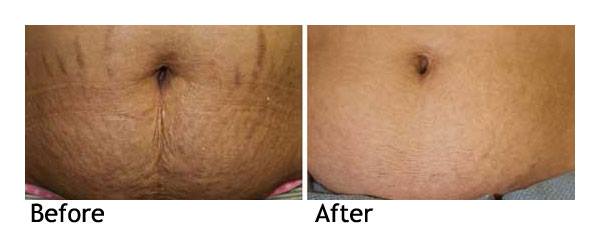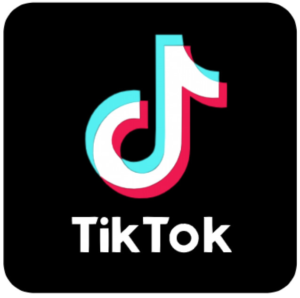Stretch Marks Treatment
Stretch Mark Removal by Radio-Frequency – a new technology for beautiful skin in Phoenix | Scottsdale Arizona
Stretch marks, also referred to as striae in scientific terms, refers to a form of skin scarring associated with obesity, short term weight gain, pregnancy and puberty. Stretch marks are especially common on the thighs, hips, abdomen, lower back, buttocks, and arms. Stretch marks are formed when the dermis layer of the skin – the layer responsible for maintaining the skin’s elasticity and shape – is stretched beyond its ability. The connective fibers within the dermis layer break and collagen production ceases, leading to scar formation.There are various creams and lotions designed to treat stretch marks but in general they help to mildly fade out the marks as opposed to significantly reducing them or eliminating them altogether. The most popular alternatives include chemical peels, microdermabrasion and blue light therapy. In general, these options are more effective on newer scars as opposed to mature stretch marks. The most effective methods to date have been surgery and lasers. Recently, clinical studies using Radio-Frequency technology have yielded effective stretch marks removal results.
Surgery has long been used to reduce stretch marks. During surgery, the areas of the stretch skin are removed. The most common procedure is a tummy tuck or abdominoplasty where the skin below the belly button is removed . While surgery is effective it is very painful, requires anesthesia and has a high recuperation period.

Over the past decade there has been an increase in the use of lasers to remove stretch marks. The lasers remove the old stretched skin and allow for new, unmarked skin to grow. Often a number of laser treatments, around ten, are required in order to remove the stretch marks. In general, laser procedures are safe and effective with very few side effects. Immediately following laser stretch mark removal, the affected area will be red and tender. Occasionally there blisters and other symptoms typical of burn injury may appear, but these are temporary. Healing takes a few days and patients can resume their daily routine.
A new technology for effectively treating stretch marks is Pixel Radio-Frequency Technology. In his paper “Treatment of striae distensae (stretch marks) with a Radio-Frequency device” published in the Journal of Dermatological Treatment in 2009, Dr. W. Manuskiatti reviews results of the study he performed using Radio-Frequency technology to remove stretch marks. In the clinical study, seventeen females with post pregnancy stretch marks underwent six weekly treatments.
Clinically proven results showed that one week after the final (sixth) treatment, 38.2% and 11.8% of the patients were assessed to have 25-50% and 51-75% improvement in the appearance of their stretch marks, respectively. The long term effect of the treatment was confirmed during the 6 weeks follow up which showed that a higher percentage of the patients were rated to have improvement of their post pregnancy stretch marks, including 26.5% and 5.9% showing 51-75% and >75% improvement, respectively. None of the participants were rated as having no improvement in their clinical appearance of stretch marks.
Patient satisfaction was also measured and 65% of patients reported that they were very satisfied with the treatment, 23% were satisfied and 12% were slightly satisfied.





